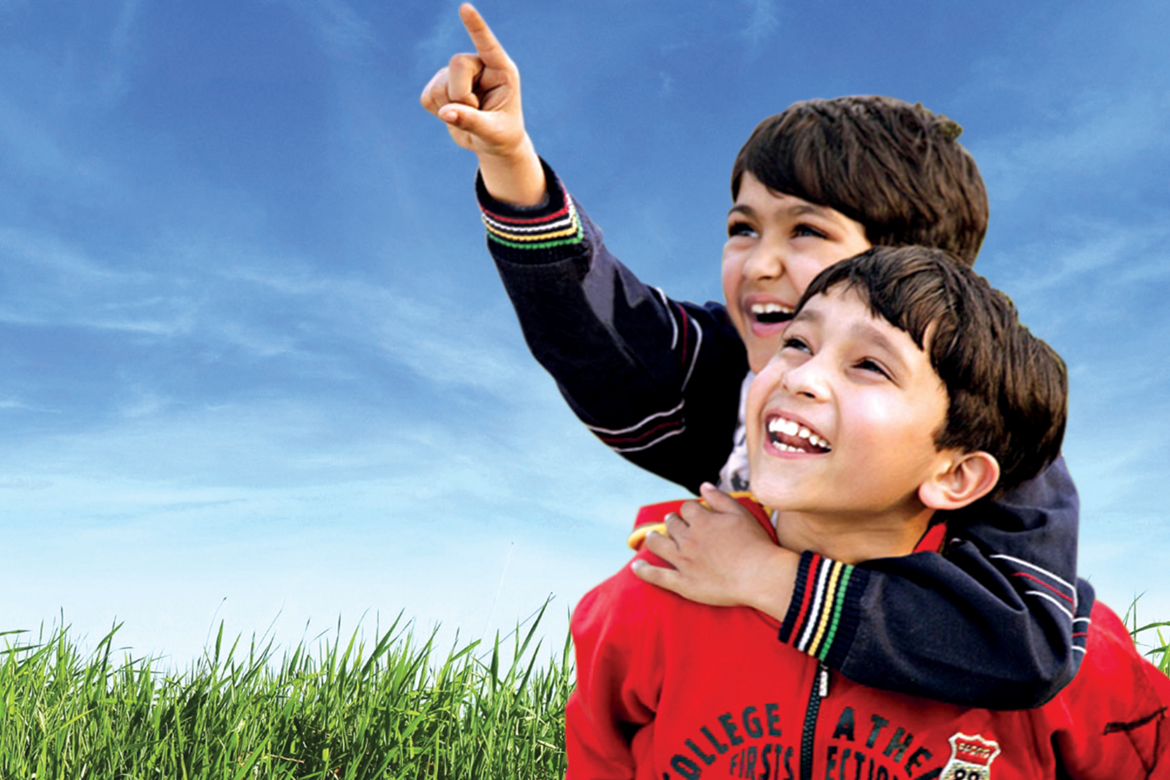A Vigilant Outlook
Regular physical examination of your child by a paediatrician is crucial as it can help in the prevention or early diagnosis of many health problems.Here’s an overview on some of the warning signs in children, which if not taken care on time could be a matter of great concern.
Seeing Eye To Eye
Vision problems are common among school-age kids. Your child’s vision is essential for his/her success at school. If the vision suffers, so will the schoolwork and overall performance in academics. Therefore, parents and teachers should be aware of the common signs of the possible vision concerns.
Warning Signs
- Complains of blurred or double vision
- Bumps into objects
- Red eyes or watery eyes
- Encrusted eyelids
- Sensitivity to light
- Rubs eye frequently
- Headaches or tired eyes
- Squints or tilts the head to see better
- Consistently sits too close to the TV or holds a book too close to the eyes
- Gets lower grades than usual
What Should You Do?
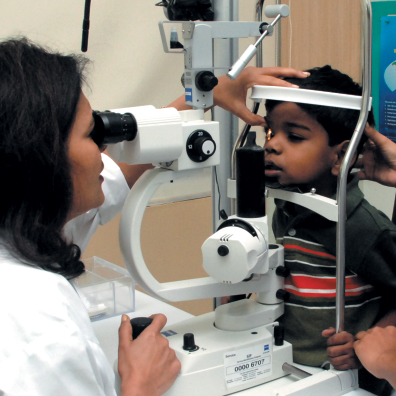
Schedule an appointment with your optometrist or ophthalmologist if your child exhibits any of these signs.A consultation with your doctor may reveal that your child has refractive errors that can be easily corrected with eyeglasses or contact lenses
Fine Tuning The Frequency
Hearing loss is common in school age children and this can affect their ability to comprehend and use language. Many children have hearing loss that fluctuates due to recurring ear infections. Other predisposing factors include congenital abnormalities, head trauma and infections like meningitis.
Warning Signs
- Poor response or no response to any voice at normal speaking level
- Absence of startle response to loud sounds
- Difficulty following instructions or requests despite listening attentively
- Reduced or absent responses to environmental noises like car horns, approaching footsteps, telephone rings, opening or closing of the doors
- Consistently setting the volume at an unusually high level while watching television or listening to the radio/music
- Slow language and speech development
What Should You Do?
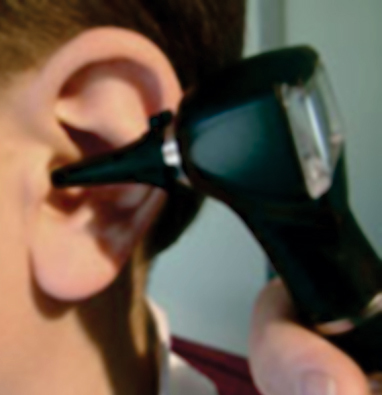
If you suspect your child has a hearing loss, you should consult your paediatrician, who may refer you to a specialist. Some types of conductive hearing loss can be corrected with surgery or by the removal of impacted ear wax,while the others may require a different treatment approach based on the pathology
CAUTION:
Listening to very loud music, especially with earphones,can permanently damage your child’s hearing ability
Understanding Learning Disability
Learning Disability (LD) is a general term that describes specific kinds of learning problems. Learning disabilities tend to be diagnosed when children reach school age, and can affect children both academically and socially.
Warning Signs
- Trouble learning the alphabet,spellings, rhyming words or connecting letters to their sounds
- Unable to understand what he or she reads
- Very messy handwriting
- Struggles to express ideas in writing
- Learns language late with limited vocabulary
- Difficulty in following directions
- Gets confused over math symbols and misreads numbers
- Behaves inappropriately in social situations
What Should You Do?
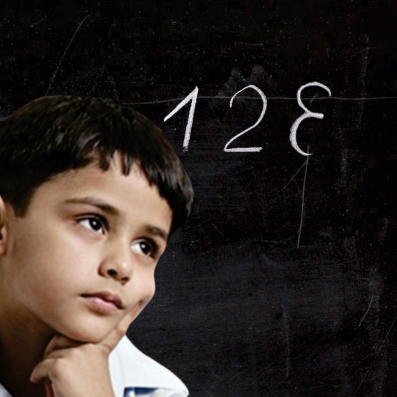
If a child shows any one of these signs, teachers and parents may want to investigate more. The child might have to be examined and evaluated by a doctor to see if he or she has learning disability.
BE POSITIVE
Parents support to their children can make a huge difference. And t h e g o o d n e w s is t h a t p a r e n ts involvement in the educational process, both at school and home, can ensure optimal progress in the academic performance of their children.
Childhood obesity
Childhood obesity is on the rise. Childhood obesity is not just a cosmetic problem anymore as these children are likely to stay obese into adulthood and more likely to develop diseases like diabetes and cardiovascular disorders at a younger age.
Causes
- Increased intake of junk and processed food products that are high in fat and sugars but low in vitamins, minerals and other healthy micronutrients
- Decreased physical activity levels with the growing use of computers, increased time watching television and decreased physical education in schools
- Heredity and family history of obesity
- Social and economic development and policies in the areas of agriculture, transport, urban planning, food processing,distribution and marketing
Consequences
- A higher chance of premature death or disability in adulthood
- Obesity into adulthood associated with many short-term and long-term health problems
- Developing Non-Communicable Diseases (NCDs) like diabetes and cardiovascular disorders at a younger age
FACTS & FIGURES
As per WHO, the prevalence of childhood obesity has increased at an alarming rate. Globally, in 2010 the number of overweight children under the age of five was estimated to be over 42 million. Close to 35 million of these are living in developing countries.
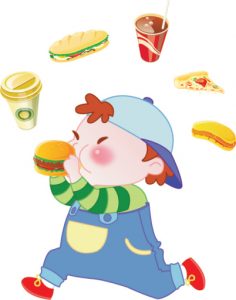
As per WHO, the prevalence of childhood obesity has increased at an alarming rate. Globally, in 2010 the number of overweight children under the age of five was estimated to be over 42 million. Close to 35 million of these are living in developing countries.
Prevention
- By including more fruits and vegetables as well as legumes, whole grains and nuts in your diet
- By limiting energy intake of total fats, and shifting fat consumption from saturated fats to unsaturated fats
- By restricting the intake of sugars and salt rich foods
- By increasing physically activity, i.e., at least 60 minutes of regular, moderate tovigor ous-intensity activity everyday
Fight bacteria
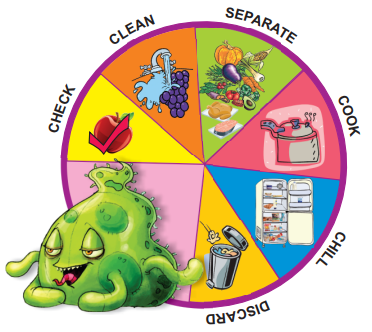
Just remember
- Always start a meal with salads
- Minimise the use of high-calorie dressings, cheese, butter, mayo and sauces
- Choose grilled rather than fried foods, thus avoiding items like French fries, fried snacks and deep-fried chicken
- Select low-fat milk or orange juice rather than high-fat milk shakes
- Avoid purchasing salt-rich foods like processed cheese, fast foods, ready to-eat food products, salad dressings, pickles and potato chips
- Limit the intake of beverages, such as carbonated soft drinks and carton juices
- Practice balance, variety and moderation in your as well as your family’s diet, and your children are likely to follow suit
Safety calling
- Animal bites and scratches are dangerous. Therefore, keep your children away from all stray animals
- Guide your children with proper pedestrian rules so that they learn to cross roads safely
- Teach your children the importance of appropriate safety equipment made for each sport like helmets, mouth guards, pads, etc.
- Supervise your children while surfing Internet, using computers, playing games & watching movies. Limit their television viewing; instead, encourage reading and storytelling
- Set a good example for your children by not smoking in front of them, always using a seat belt, helmet, etc.
Get clean hands!

Did you know?
Unwashed hands are a prime cause of food-borne diseases and several respiratory illnesses. Therefore, wash your hands with hot, soapy water before handling food, after using the bathroom, changing diapers and handling pets. Do not forget to wash between your fingers,under your nails and the top of your hands.
 Back to Site
Back to Site